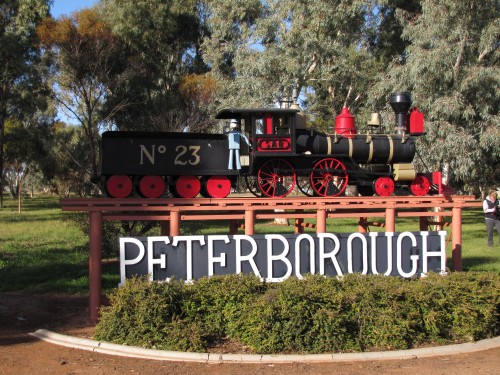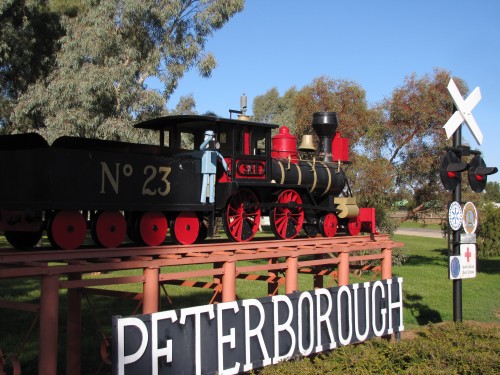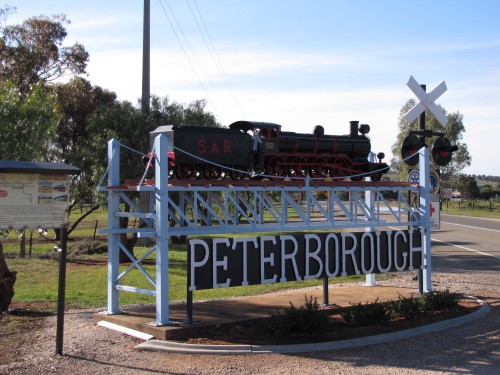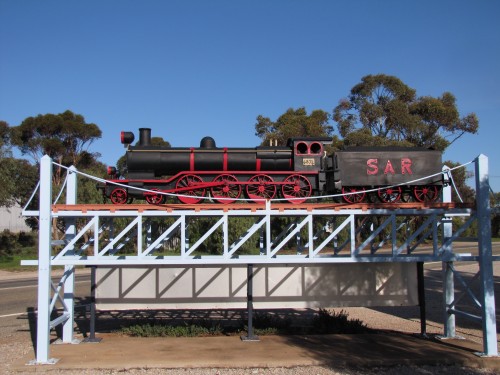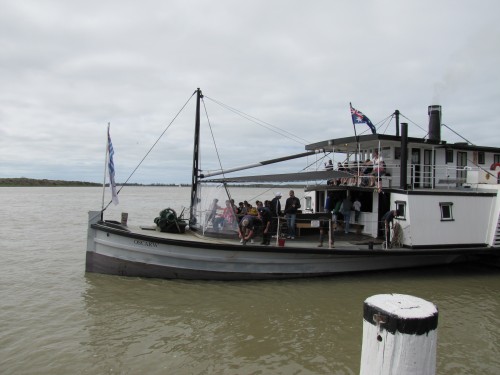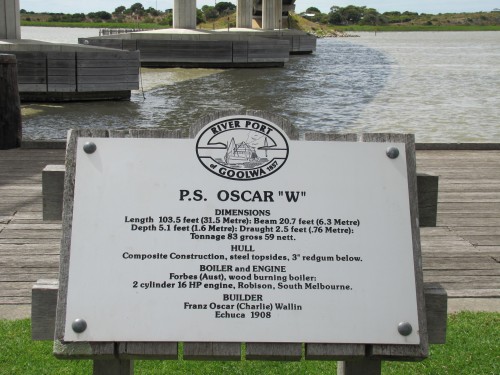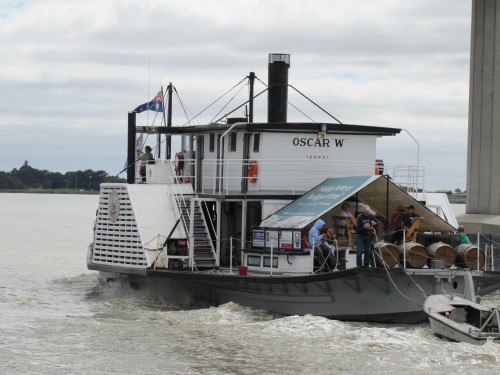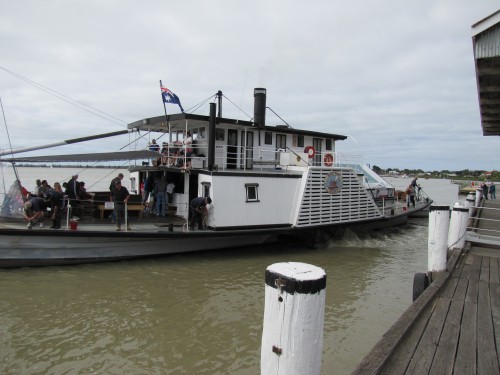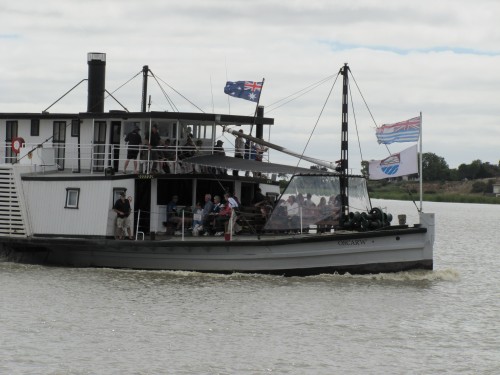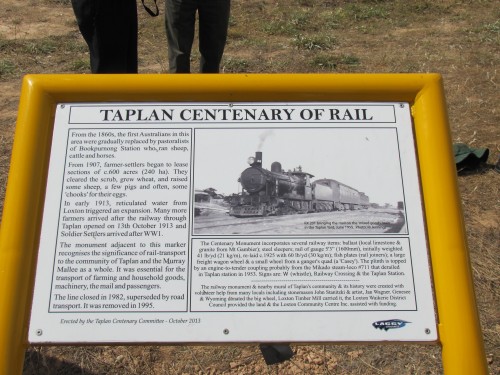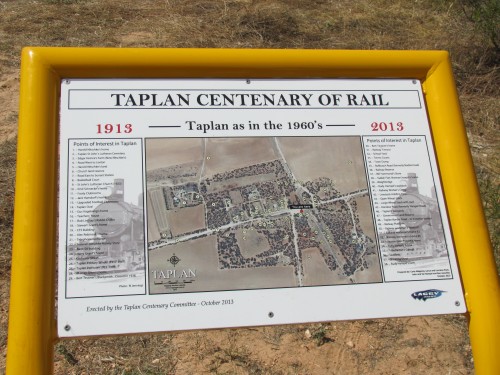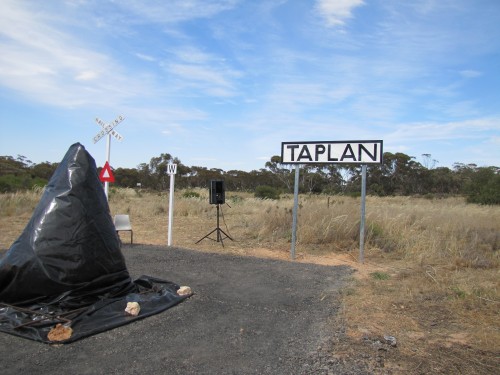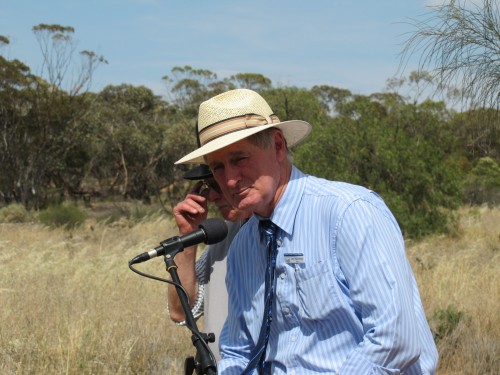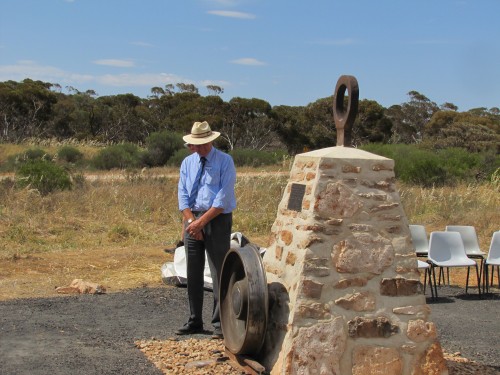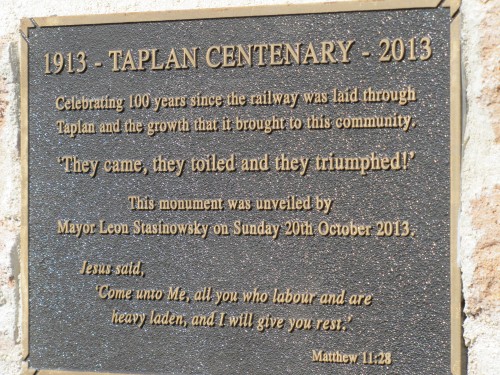Model trains in Peterborough, South Australia
As I wrote here a few days ago, we visited family recently in the mid-north town of Peterborough, South Australia. While there I took a few photos around the town, something I had neglected to do much of during numerous visits to the town over more than 40 years. Peterborough is rightly proud of its railway heritage and a railway museum features high on the list of visitor attractions.
In today’s post I feature another two shots of one of the four model trains shown in the main entrances to the town. This one is on the road into town from Orroroo to the north. I love the nice touch of the engine driver waving from the cabin, and the signals next to the line.
I will feature more photos in a few days’ time.
Trains of Peterborough, South Australia
On our recent visit to Peterborough, South Australia to visit family I spent an hour or so taking photos around town, something I had not done much of over the last 40 years on our regular visits to the town. I had three purposes in taking a few photos. First, a friend who had visited the town last year had taken many photos but her camera failed to download them. Second, I had precious few photos of the town in my own collection, and third, I wanted to share them here on this site.
Peterborough, in the mid-north of South Australia, was for many years a railway town. Major lines intersect or run through the town. Rail lines from Adelaide to Sydney, Perth to Sydney, and Broken Hill to Port Pirie are the main ones. In years gone by another line ran from there through to Quorn further north in the state. At one time the town boasted three different operating rail gauges: narrow, standard and broad gauge. This made Peterborough unique, possibly in the only place in the world where this happened. Standardisation, and the closing of some lines, has brought this to an end.
Today most trains just go straight through the town. At each of the four main road entrances to the town locals have placed magnificent modal trains on display at the welcome signs to the town. I will feature each of these over coming days.
The model train shown in today’s photos can be found on the south-western approach to the town on the road leading from Clare and Jamestown. The S.A.R. on the tender stands for South Australian Railways.
Oscar W at River Port Goolwa
Some time ago now I took a series of photos on a visit to Goolwa near the mouth of the River Murray in South Australia. we were visiting friends who live in the nearby seaside town of Victor Harbor, about an hour south of Adelaide and just over an hour’s drive from our home in Murray Bridge.
Rod took us on a tour of the local sights in his 1928 Model A Ford with the simple name of “Don”. Several times I have been driving with him in his old car and I always enjoy the experience. On this occasion we drove to Goolwa, a town on the banks of Australia’s largest river. The port of Goolwa was a bustling river port in the 1800s, transporting goods to and from farming areas upstream in the Murray-Darling river system. The goods were then taken by train – Australia’s first railway – to the port at Victor Harbor. In its heyday this was amongst the busiest ports in the country. The quick spread of the railway system soon saw the demise of this important port.
These days, Goolwa is both a busy retirement town and tourist destination. Every two years the town hosts the South Australian Wooden Boats Festival, attracting many people from all over to see these wonderful old craft. Visitors can also take cruises on the River Murray on a variety of vessels, including the Oscar W shown in today’s photos.
I have been promising my wife a trip on one of these boats for some year now. I had better keep my promise soon – an opportunity for more photos.
Taplan Railway Centenary Celebrations part 6
This interpretive sign was placed in position near the plaque celebrating the centenary of the opening of the railway line through Taplan, south east of Loxton in eastern South Australia. (Click to enlarge the image.)
The Taplan area in the Murray Mallee region of my state is a predominantly cereal growing area, supplemented by sheep and cattle. The opening of the railway line in 1913 accelerated the growth of the town and the surrounding farms. Its introduction meant quick access to markets for the products produced, as well as easy transport of farming supplies needed.
When I was growing up on my father’s farm in the 1950s and 60s, the town was still a busy community. Every day on my way to school and home again I would walk past this very spot where these signs now stand. The school was a one room, one teacher rural school with about 30 children attending. It closed many years ago and the few children left in the community now go to school in Loxton by bus.
The interpretive sign shown in the photo below shows an aerial photo of Taplan taken in the 1960s. It shows my father’s farm homestead in the lower right hand corner of the photo. Our farm is shown as the cleared land in the lower part of the photo – of course, this was only a small portion of the whole farm which stretched several miles in either direction east and west of the town, and about a mile to the south, some 2000 acres in all.
Taplan Railway Centenary Celebrations part 5
After all of the speeches the visitors to the Taplan Railway Centenary celebrations moved down the main street to near the old Post Office. Here a special memorial plaque and historic monument had been set up as well as some signs.
The signs in the photo above show (from the left):
- the Railway Crossing warning sign for the road crossing
- the W sign indicating to the train driver to blow the train’s whistle as he approached the crossing
- the Taplan station sign.
All of these have been relocated from their original positions so that they can be near the displays and memorial. The official unveiling and opening was performed by Mayor Leon Stasinowsky (below) on the 20th October 2013.
